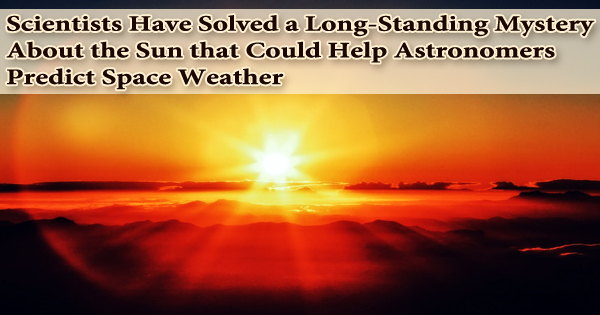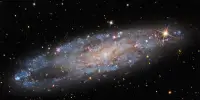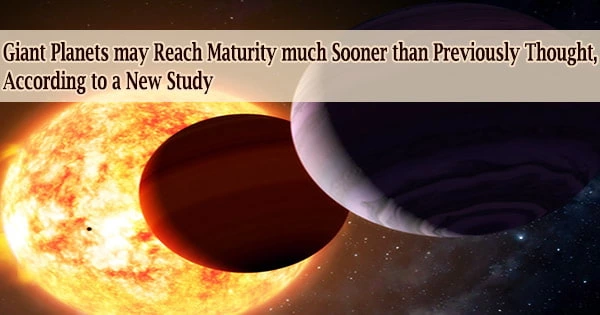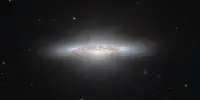Scientists from Australia and the United States have solved a long-standing riddle about the Sun, which might aid astronomers in forecasting space weather and preparing for potentially deadly geomagnetic storms if they strike Earth. Solar flares, sunspots, and coronal mass ejections may all create space-weather streams of high-energy particles from the Sun, which can cause geomagnetic storms. However, it is unclear how these occurrences occur, and it is hard to anticipate when they will occur.
Now, new research conducted by Dr. Geoffrey Vasil of the University of Sydney’s School of Mathematics and Statistics might give a solid theoretical foundation for better understanding the Sun’s core magnetic dynamo, which helps generate near-Earth space weather.
The Sun is divided into numerous zones. The convection zone is one of the most notable features of the star, consisting of a 200,000-kilometer-deep ocean of super-hot rolling, turbulent fluid plasma that covers the outer 30 percent of the star’s diameter. According to current solar theory, the biggest swirls and eddies take up the convection zone, which NASA depicts as huge circular convection cells.
The ‘Convective Conundrum’ is a long-standing dilemma in which these cells have never been discovered. There is a cause, according to Dr. Vasil. Instead of circular cells, the flow splits into towering spinning cigar-shaped columns that are just 30,000 kilometers long. This, he claims, is due to the Sun’s spin having a far larger impact than previously assumed.
“You can balance a skinny pencil on its point if you spin it fast enough,” said Dr. Vasil, an expert in fluid dynamics. “Skinny cells of solar fluid spinning in the convection zone can behave similarly.”
The findings have been published in the Proceedings of the National Academy of Sciences of the United States of America.
“We don’t know very much about the inside of the Sun, but it is hugely important if we want to understand solar weather that can directly impact Earth,” Dr. Vasil said. “The characteristics of magnetic dynamos, such as the Sun, are known to be totally altered by strong rotation.”
This predicted rapid rotation inside the Sun, according to Dr. Vasil and collaborators Professor Keith Julien of the University of Colorado and Dr. Nicholas Featherstone of the Southwest Research Institute in Boulder suppresses what would otherwise be larger-scale flows, resulting in more variegated dynamics for the outer third of the solar depth.
“By properly accounting for rotation, our new model of the Sun fits observed data and could dramatically improve our understanding of the Sun’s electromagnetic behavior,” said Dr. Vasil, who is the lead author of the study.
Solar geomagnetic storms can, in the most extreme circumstances, bombard the Earth with radiation pulses capable of destroying our sophisticated global electronics and communication systems. The Carrington Event, a massive geomagnetic storm of a similar sort, struck Earth in 1859, although this was before our global reliance on electronics. The telegraph system from Melbourne to New York, which was still in its infancy, was harmed.
“A similar event today could destroy trillions of dollars worth of global infrastructure and take months, if not years, to repair,” Dr. Vasil said.
In 1989, a small-scale incident in Canada resulted in huge blackouts, which some initially mistook for a nuclear strike. A solar storm on the magnitude of the Carrington Event passed Earth in 2012 without causing any damage, missing our orbit around the Sun by nine days.
“The next solar max is in the middle of this decade, yet we still don’t know enough about the Sun to predict if these cyclical events will produce a dangerous storm,” Dr. Vasil said. “While a solar storm striking Earth is extremely rare, it will happen someday, and we must be prepared.”
Solar storms can take from hours to days to reach Earth after erupting from the Sun. Dr. Vasil believes that a deeper understanding of our home star’s underlying dynamics might help planners avert tragedy if they have an adequate warning to shut down equipment before a burst of energetic particles takes over.
“We cannot explain how sunspots form. Nor can we discern what sunspot groups are most prone to violent rupture. Policymakers need to know how often it might be necessary to endure a days-long emergency shutdown to avoid a severe catastrophe,” he said.
To enhance the modeling of the Sun’s internal activities, Dr. Vasil and his colleagues’ theoretical model will now need to be tested by observation. To do so, scientists will utilize helio seismology, a technique that involves listening within the star’s beating heart.
“We hope our findings will inspire further observation and research into the driving forces of the Sun,” he said.
This might include the first launch of polar orbiter observational satellites outside the Solar System’s elliptical plane.
















